https://web.microsoftstream.com/video/dc52c622-4dca-4ec3-9456-dcf22fa916cc
All posts by Hannah B
Filters
Citizen Kane Tasks-
Citizen Kane was co-written, produced, directed and starring Orson Welles, a 25-year-old theatre director working in New York. He was given a budget of $500,000 by RKO (which he ended up exceeding), in an attempt to bring his talents to the world of film. He was given complete creative control, something incredibly strange for filmmakers at the time, especially since it was Welles first film production. He cast the Mercury Theatre company for the film, an American Theatre group that Welles had formed in 1937. Welles uses his theatrical experience to elevate the visual significance of certain scenes, using the placement of actors to symbolise power, light and shadow to show good and evil, deep focus so the audience can see all of the details in frame, just like a traditional play.
My favourite scene in Citizen Kane is the ‘Breakfast scene’, where the audience watches as Kane’s marriage with Emily falls apart over the years, condensed down to six shots, through the use of a montage. The scene begins with Charlie sits down for breakfast with Emily, they sit next to each other and are both wearing formal outfits, Kane in a suit and Emily in a relatively revealing white dress. Emily expresses her frustration with her husband and then a shot of a train is overlaid to give the impression of the passing of time.
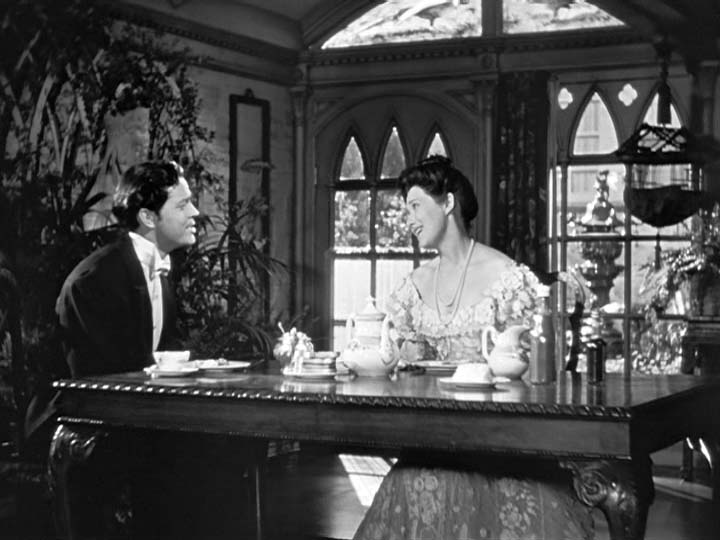
After the train has silently passed by, Emily is revealed to be sitting on the opposite side of the table, symbolising the growing divide between her and Charles. Her outfit is more conservative, and less of her is shown, obscured by a bouquet in the middle of the table. Charlie is shown, notably older and smoking a pipe, he disregards Emily’s complaints, and the train overlay begins. Emily’s dialogue begins before she is shown, still complaining about Kane’s obsession with work. Even more of the table is covered and her outfit is even more conservative looking, a grey jacket covering the majority of her body. Kane is then shown, making a witty remark, wearing his dressing gown, both in front of him and behind him are several bouquets and plants, probably gifts bought for Emily in an attempt to apologise for his absence.

Another train overlay later, and Emily is shown once again, like before, her outfit is incredibly formal and covering and shown behind her are various fancy metal objects, like a chandelier, probably another half-hearted gift from her husband. She makes a comment to Charles as it cuts to him, practically ignoring her as he begins to eat his breakfast. The music becomes faster as the tension between them increases, and another train passes by. Emily starts to talk to Charles before being immediately cut off by him slamming his cup down angrily. Behind Kane are even more plants and flowers, as well as a statue, possibly symbolising that he now views Emily as a statue, just another pretty object in his possession. Charles appears more villainous, and the music sounds more sinister to show this, contrasting the dreamy and romantic music from the beginning of the scene. The final train passes by, showing Emily reading Kane’s rival newspaper and not even bothering to talk to her husband. Charlie looks up and then looks back down to read his copy of the Inquirer, all of the plants in the background appearing to be withering, just like their love. Neither says anything as the camera zooms out to show both of them at opposite sides of the table, the camera angle referencing what was shown when Kane first sat down for breakfast.
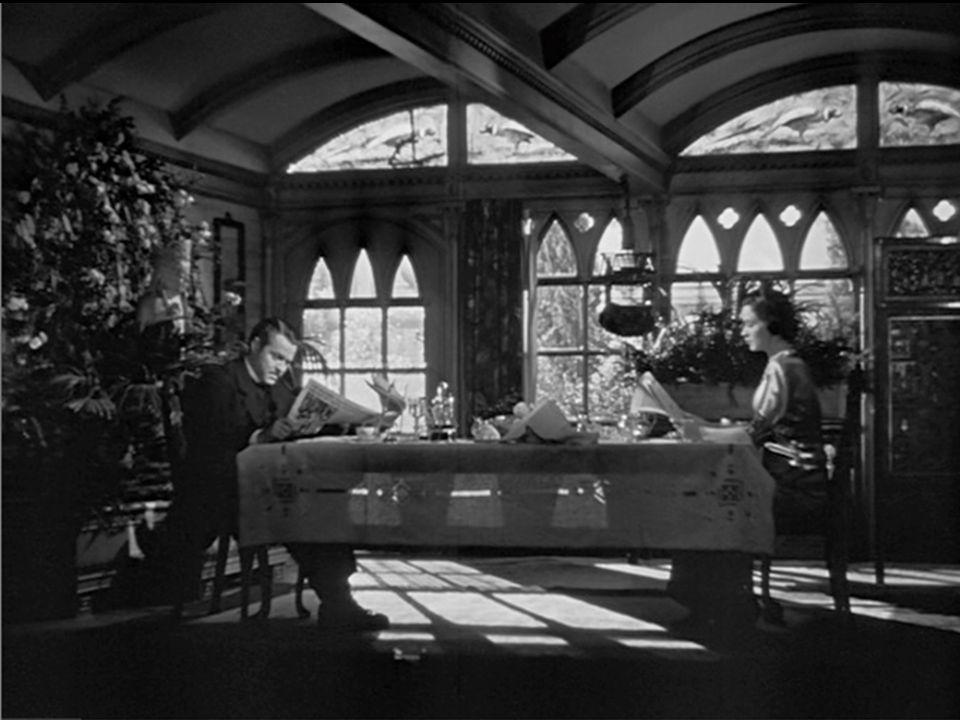
Many Critics view Citizen Kane as “The Greatest Movie Ever Made” because of how well made and influential it is. It utilises many unique story telling aspects of and techniques, like the story not being told in chronological order, the use of blocking and to show character dynamics, dramatic lighting techniques (like backlighting), extreme high angle and low angle shots to symbolise character’s emotions, deep focus so the audience can see interesting components in both the foreground and background. Citizen Kane may not have been the first to use all of these, but it combined these elements to create a memorable and interesting story. Every technical detail is done for a reason, to show the audience something important, something that Welles felt they needed to see. For example, to symbolise Kane’s corruption and downfall, Welles begins to cover his face with shadow to obscure his facial expression and emotion, making him seem less human. Comparing this to when Charles was younger shows just how much his character has changed over the years.
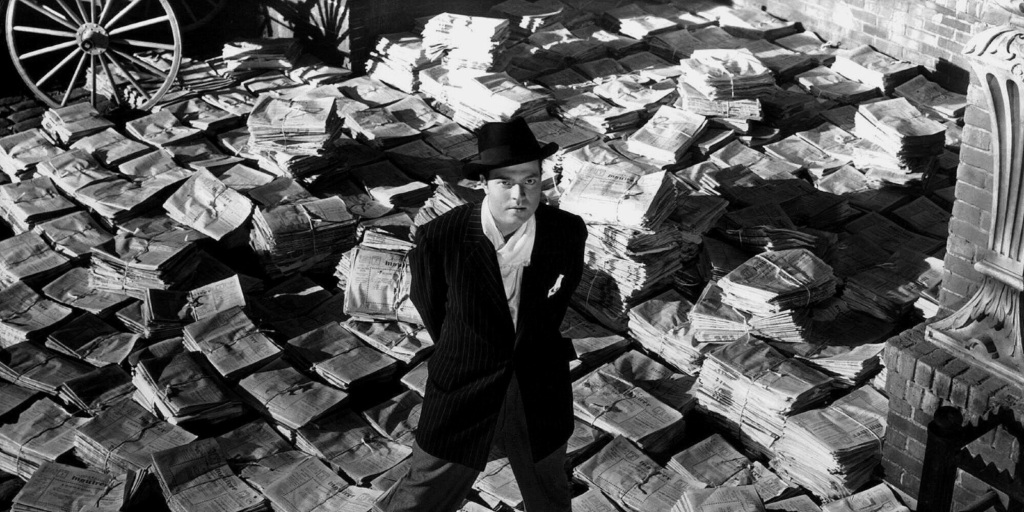
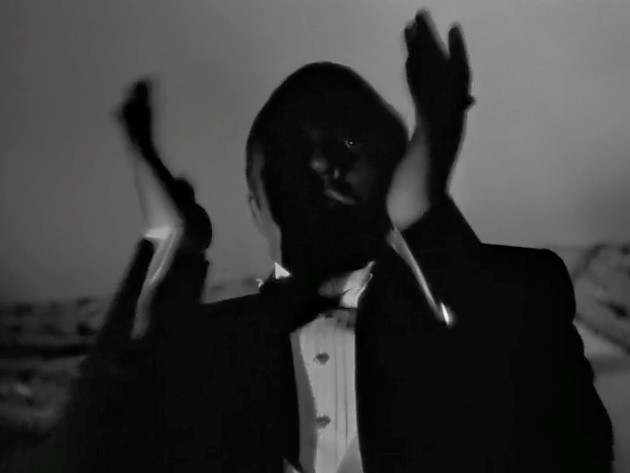
Another instance of Welles using backlighting is for our protagonist, Jerry Thompson, however this is for a different reason. Throughout the film Thompson is either filmed from the back or by using backlighting, this is done to hide his appearance from the audience, allowing them to imagine themselves in his position. The lack of information about Jerry helps to solidify this, unlike any of the other characters talked to in the film, we never learn anything about Thompson, his life, childhood or aspirations. Doing this separates him from our other main characters and allows the audience to also focus more on the details given to them about Kane’s life, a chance to focus on the puzzle presented by Welles, instead of irrelevant details about Thompson’s life and career as a journalist. Covering Thompson’s face for the majority of the film also helps create a visual connection between him and Kane, as well as the narrative connection of him investigating Kane’s last words.
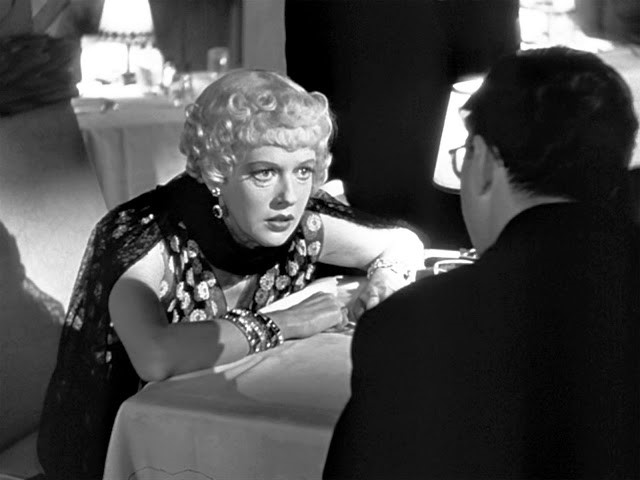
In conclusion, Welles incredible combination of technical and narrative aspects, partially from his experience with theatre direction, elevate the story of Citizen Kane to something more than just a simple mystery story. Each character’s segment is made memorable not just from their dialogue but from their costumes, their physical placement in the scene and even how they are filmed.
Birth of Cinema Questions-
The first film made by the Lumiere brothers was “Workers Leaving the Lumière Factory”, which was filmed in 1895.

The Phantom Ride is an early version of a tracking shot, where a camera is placed at the front of a vehicle so the shot glides along the tracks.
“The Sick Kitten” and “An American Fireman” are early silent films with cuts that change the camera placement. The first had a closeup and the second featured continuity editing, cutting between locations as the story progressed.

The first film star was called Florence Lawrence.
Film producers moved from the East coast to Hollywood to avoid the patent placed on useful equipment for filmmaking. Producers did not want to pay Edison so they went to the West coast to avoid Edison and his lawyers. The light and weather is also good for filming with a variety of landscapes.

Cousin’s describes Sweden and Denmark’s film industries as some of the best in the world during the 1910s.
Birth of a Nation (1915) is a controversial film because of the glorification of white supremacy, causing a resurgence in KKK membership and racism against black people in the US. It was directed by DW Griffiths, and many critics still view it as a masterpiece because of the editing, acting and technical quality in general.

Buster Keaton, Charlie Chaplin, and Harold Lloyd are influential comedians of the silent film genre, often working as an actor as well as the filmmaker themselves. Their work was mostly physical comedy, using themselves and the environment around them to tell jokes.

Keaton- Sherlock Jr. (1924), The General (1926), The Cameraman (1928)
Chaplin- The Kid (1921), The Great Dictator (1940), The Gold Rush (1925)
Lloyd- Safety Last (1923), The Freshman (1925), Speedy (1928)
They influenced various filmmakers like Toto and Jacques Tati.
Cinema Going In Jersey-
During the Golden Age of Cinema (1930s-60s), there were 4 screens on island, each with a lot of seats more similar to a theatre setup. Now there are 10 screens in the only cinema on island, owned by Cineworld, with a variety of film showings and room sizes.
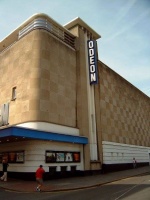
There are several independent cinema spaces owned by hotels, The Jersey Art Centre and film festival societies.
The number of cinemas on island have been going down because of the increase of people buying TVs. Many people bought TV’s so they could watch live events, leading to them spending more time at home and less time out and watching films.
Film Roles- Paragraphs For Roles 1 and 2
ROLE 1- EDITOR
In charge of cutting, deleting, and assembling the raw footage of the film to create the final product. Also responsible for enhancing important narrative aspects through when shots and scenes are cut. It is an important role as, if done wrong, the audience can easily become bored. I want to take inspiration from unique and creative editors, who preferably have connections to animation as that is something I am very interested in. Because of all of these factors, I chose to look at the work of Andrew Weisblum, an American film and visual effects editor, who has often worked alongside Wes Anderson in his live action and animated films. Andrew Weisblum himself is credited for editing a total of nineteen films, with two more in development, including Fantastic Mr. Fox, Black Swan (which he won an academy award for), and Isle of Dogs. He describes his and Anderson’s editing style as “precise and detailed”, and uses storyboards and animatics to plan certain parts of the film. He also has a background in visual effects, as well as traditional film, and uses these skills often, like editing backgrounds and certain details while cutting and assembling the film, making his process more organised and fitting into his creative vision better and elevate the story.
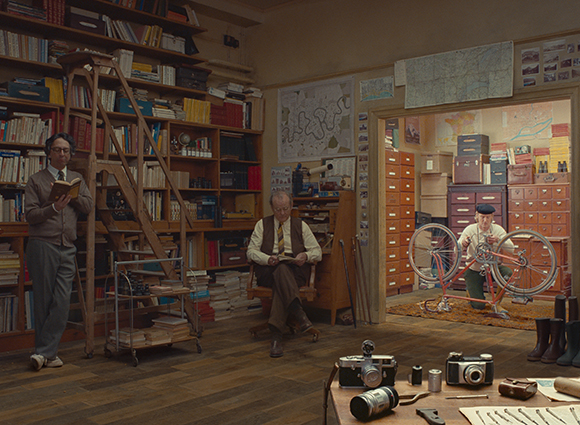
ROLE 2- ANIMATOR
Responsible for adding in moving images either alongside or instead of live action footage. I am leaning more towards 2D animation, meaning the majority of my work will be hand drawn. It is a rather slow and tedious process but worth it for the unique visuals. Because I am most interested in 2D animation, and I am mostly taking inspiration from other 2D animators. Most specifically the work of Studio Ghibli, a Japanese animation film studio whose work includes, Spirited Away, Howl’s Moving Castle, and Ponyo. All of these films took a lot of time and people to make but I am hoping of creating some animated shorts inspired by their art style as well as the types of stories they tell. Their style is described as “whimsical and joyful” as many of their films are suited for children, and they use a variety of animation methods to create beautiful and memorable scenes, including watercolour and acrylic paintings for backgrounds. Storyboards are also used to plan out ideas and scenes and to make actually animating the project significantly easier. Ghibli’s style is very fluid and loose allowing big action filled scenes to feel dynamic and visually appealing, and smaller quiet scenes to be calm and natural looking.

Sources-
Animation Inspiration-
I am most interested in 2D animation and I am mostly taking inspiration from other 2D animators. Most specifically the work of Studio Ghibli, a Japanese animation film studio whose work includes, Spirited Away, Howl’s Moving Castle, and Ponyo. All of these films took a lot of time and people to make but I am hoping of creating some animated shorts inspired by their art style as well as the types of stories they tell. Their style is described as “whimsical and childlike” as many of their films are suited for children, and they use a variety of animation methods to create beautiful and memorable scenes.

Editing Inspiration-
Editing is an important part of filmmaking and I want to take inspiration from unique and creative editors, who preferably have connections to animation as that is something I am very interested in. Because of all of these factors, I chose to look at the work of Andrew Weisblum, an American film and visual effects editor, who has often worked alongside Wes Anderson in his live action and animated films. Andrew Weisblum himself is credited for editing a total of nineteen films, with two more in development, including Fantastic Mr. Fox, Black Swan (which he won an academy award for), and Isle of Dogs. He describes his style as precise, and uses storyboards and animatics to plan certain parts of the film. He also has a background in visual effects, as well as traditional film, and uses these skills often, like editing backgrounds and certain details while cutting and assembling the film, making his process more organised and fitting into his creative vision better and elevate the story.

Inquiry
Inquiry is the asking for information, and using inquiry as a skill is crucial in film. This is done by researching and analysing previous texts and examples, as well as personal interests, in search of inspiration for creative and technical elements, and can also be used in pursuit of roles and strategies. Doing this increases understanding of these topics and will be beneficial for creating the finished products, as well as encouraging experimentation.
In film, this can be done by watching films and analysing for the filmmaker’s intentions. Doing this can increase understanding the thought process of the creator’s and the ability to think of what I would do in the role.
Film Roles- Job Descriptions
Editor–
In charge of cutting, deleting, and assembling the raw footage of the film to create the final product. Also responsible for enhancing important narrative aspects through when shots and scenes are cut. It is an important role as, if done wrong, the audience can easily become bored. Important for fulfilling the director’s creative vision.
Animator–
Responsible for adding in moving images either alongside or instead of live action footage. I am leaning more towards 2D animation, meaning the majority of my work will be hand drawn. It is a rather slow and tedious process but worth it for the unique visuals.
Writer–
Responsible for writing out the script including the actions of characters and their dialogue. An important role as most stories feature some kind of plot or narrative. Making sure the theme and messages of the film are there for a reason, and that every moment is important to the story is vital for the film.
Film Roles
ROLE 1- Editor
ROLE 2- Animator (2D as it is what I am most experienced with)
ROLE 3- Writer
